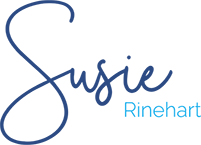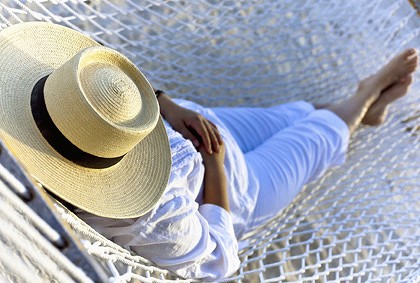A nap is a thing of beauty. World peace is within reach. All we have to do is nap. It’s the most underused, powerful tool for self-care and work productivity. There’s science behind this. My doctors told me that short naps, between ten and twenty minutes, do more for lessening anxiety and improving focus than caffeine or even adding an hour of sleep at night. Increasingly, companies are creating special napping areas to give their employees a chance to recharge. Apparently, Google, Huffington Post, Zappos, Procter & Gamble all have nap rooms and encourage napping. They don’t just want their teams to work hard, they want them to work smart. I have been thinking about the nap as a way to begin again in the new year. After all, it’s my favorite way to reset, renew, and reinvigorate any day.
Here are a few tricks I’ve discovered as I channeled my perfectionist tendencies into napping:
Keep it short: 10-20 minutes allows you to slip into light sleep, enough to recharge without feeling more groggy. On weekends, I go for the luscious 60-minute nap!
Darkness helps: Cover your eyes with a mask or a hat. I use earplugs too–I can still hear my alarm with them in, but I don’t get sucked into nearby conversations.
Rest counts: Don’t worry if you don’t actually sleep. Just lie there and breathe deeply.
Imagine paradise: Picture yourself in a blissful, relaxing place to drown out the to-do list.
Build it in: Schedule it into your day. I plan when I am going to eat lunch, and when I am going to nap. Sometimes they are back-to-back. For me, the best time to nap is between 1-4pm.
Set an alarm: I use a timer, set at 12 or 20 minutes. I don’t trust myself to wake up without it.
Practice: Commit for 21 days. Make it a habit before deciding if you can or can’t nap.
Ok nappers out there: what are your best tricks? I’d love to know!
It used to frustrate me that I couldn’t make it through a day without lying down since the surgeries this past summer. In September, I was asleep more than awake and I understood it to be apart of the healing process. But by October, naps made me feel fragile. In November, I called myself weak. In December, I thought my low energy was a sign that I would never be strong again. Over the holidays, the naps felt like painful reminders of how much had changed since last year when a day wasn’t complete without a morning run, an afternoon ski, and an evening ice skate. This year, a good day included two naps and a bath.
The feeling that I shouldn’t lie down comes from the same place of shame that I feel if I am not producing something or fixing something. To do nothing feels wrong. But the brave thing for me to do is to nap. There is deep beauty to just being. After a nap, I am more present with the people I love. I am also more positive. I’ve even solved problems while napping. I wake up, knowing what to do or how to compose that tricky email. And when that doesn’t happen, I am at least better able to deal with drama.
I have been on the quest for the perfect nap ever since I can remember. As a child, I fell asleep in the sandbox, on a chairlift, while paddling a canoe. In college, I fell asleep in every class that began after one o’clock. I felt terrible about it. My professors got together and recommended that I go to a sleep clinic to determine if I had a disorder. They decided that I must have narcolepsy; it couldn’t possibly be their teaching that was putting me to sleep. I went home and told my parents. Next, I overheard my mother say to a large crowd of friends at a holiday party, “My daughter has a small necrophilia problem.”
This is what I learned: I don’t have narcolepsy (or necrophilia, thank goodness). I spent twelve hours hooked up to electrodes and video cameras in a tiny room to figure this out. They monitored my brain activity, lungs, heart rate, plus any movement in my legs, arms, or eyes. They filmed me sleeping and they set alarms to wake me up at random times. They filmed that too. The videos showed that my right foot kicks slightly, all the time. The doctors said, “You’re still running, even in your sleep. It’s enough to make you tired the next day.” The prescription they gave me? 1-2 short naps a day.
The doctors explained that a complete sleep cycle takes between 60 and 90 minutes. Most people drop into slow wave sleep (deep, dream-filled dozing) after 20 minutes. So the trick is to train your body to nap between 10-20 minutes at a time. That way, you stay in light sleep, and gain energy when you wake up. If you nap longer than 20 minutes, you risk waking up in slow wave sleep and feeling super groggy. What if you can’t fall asleep because your mind is spinning fast with the list of things to do? You breathe deeply and rest. There is a belief in eastern medicine that resting is just as good as sleeping for your health, immune system, and brain activity.
In college, I learned to build naps into my day. Instead of fighting the head nods while reading, I practiced putting my head down the minute I arrived at the library. It worked. The first fifteen minutes of a homework session began with my head on the table, out cold. After that, I could read for hours without stopping.
Later, when I was helping to run a school and pregnant, I used to ask a colleague to watch my door for six minutes while I lay down. I could sleep, even snore, and wake up refreshed after just six minutes. I don’t think I would have made it through those years without those holy six minutes each day. But I had to master the 10-20 minute nap first before I could pull off that short of a nap. The trick is to find that magic number of minutes that allows you to decompress and wake up feeling refreshed.
Now I nap at least once a day. I just napped in the middle of writing this reflection. Over the holidays, I was a moveable nap. I napped on the couch, in front of a friend’s fireplace, on the floor, drooling on the rug. I love that feeling right before I fall asleep, when I tug a blanket over my shoulders, and sink into silence, knowing that soon I will be sound asleep. This year, I resolve to focus on that good feeling and ignore the one that says I am not doing enough.
Love,
Susie
For more reflections, sign up at www.susierinehart.com Oh! and come check out the site; there’s a new “Favorites” page and other fun changes. xox s
*****

